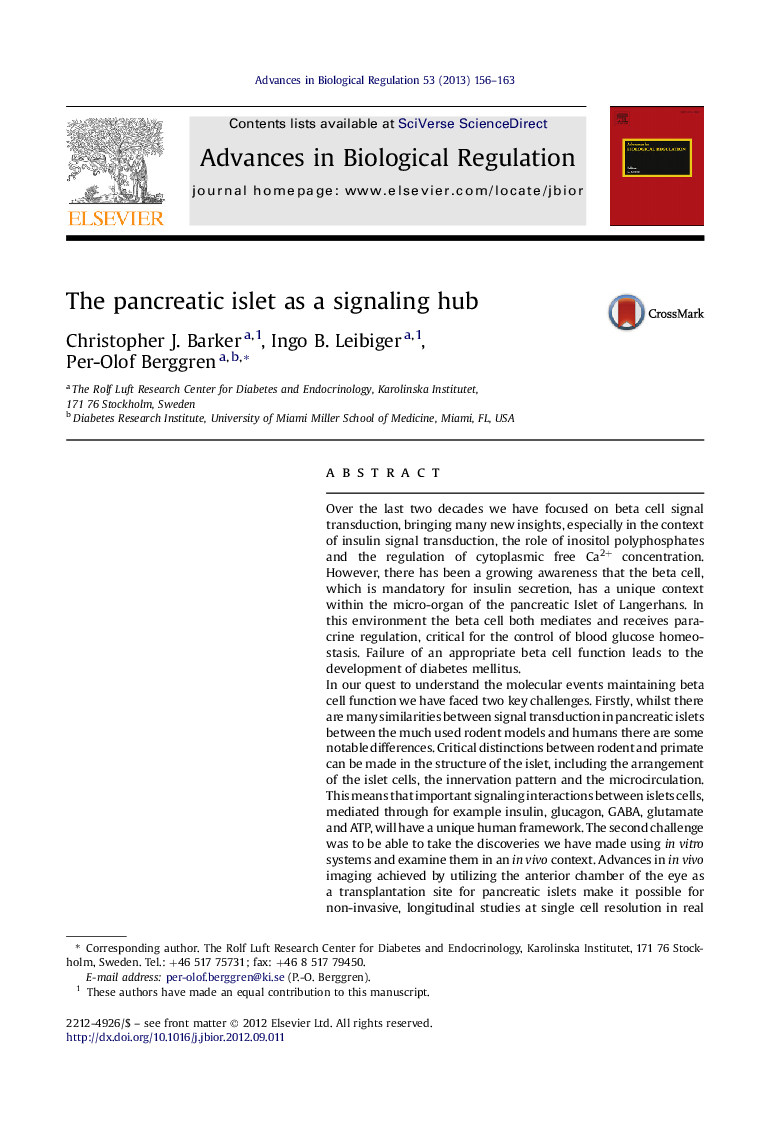| Article ID | Journal | Published Year | Pages | File Type |
|---|---|---|---|---|
| 10747656 | Advances in Biological Regulation | 2013 | 8 Pages |
Abstract
In our quest to understand the molecular events maintaining beta cell function we have faced two key challenges. Firstly, whilst there are many similarities between signal transduction in pancreatic islets between the much used rodent models and humans there are some notable differences. Critical distinctions between rodent and primate can be made in the structure of the islet, including the arrangement of the islet cells, the innervation pattern and the microcirculation. This means that important signaling interactions between islets cells, mediated through for example insulin, glucagon, GABA, glutamate and ATP, will have a unique human framework. The second challenge was to be able to take the discoveries we have made using in vitro systems and examine them in an in vivo context. Advances in in vivo imaging achieved by utilizing the anterior chamber of the eye as a transplantation site for pancreatic islets make it possible for non-invasive, longitudinal studies at single cell resolution in real time of islet cell physiology and pathology. Thus it is becoming possible to study the insulin secreting pancreatic beta cell within the framework of the unique micro-organ, the Islet of Langerhans, for the first time in a physiological context, i.e. when being innervated and connected to the blood supply.
Related Topics
Life Sciences
Biochemistry, Genetics and Molecular Biology
Biochemistry
Authors
Christopher J. Barker, Ingo B. Leibiger, Per-Olof Berggren,
